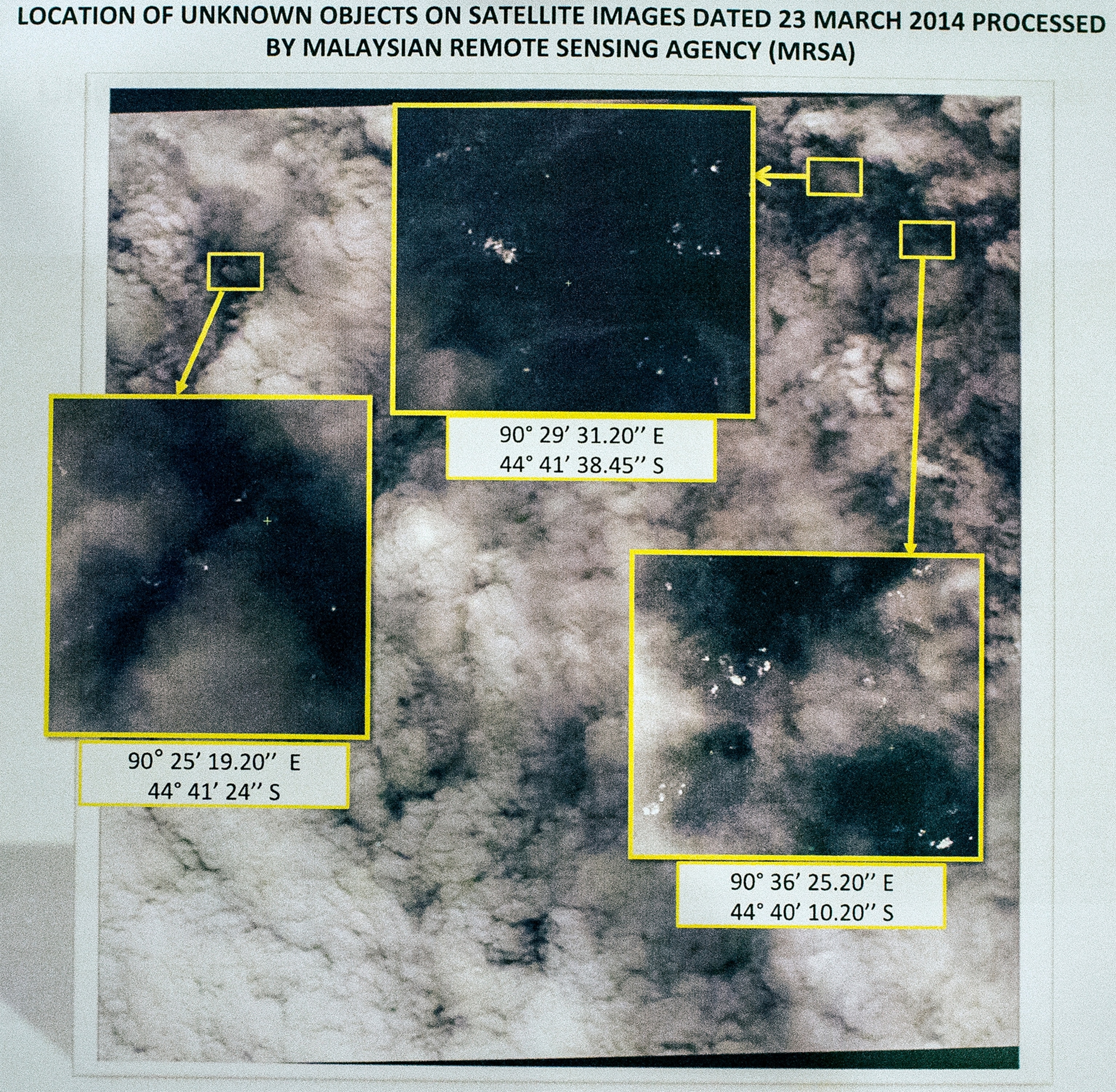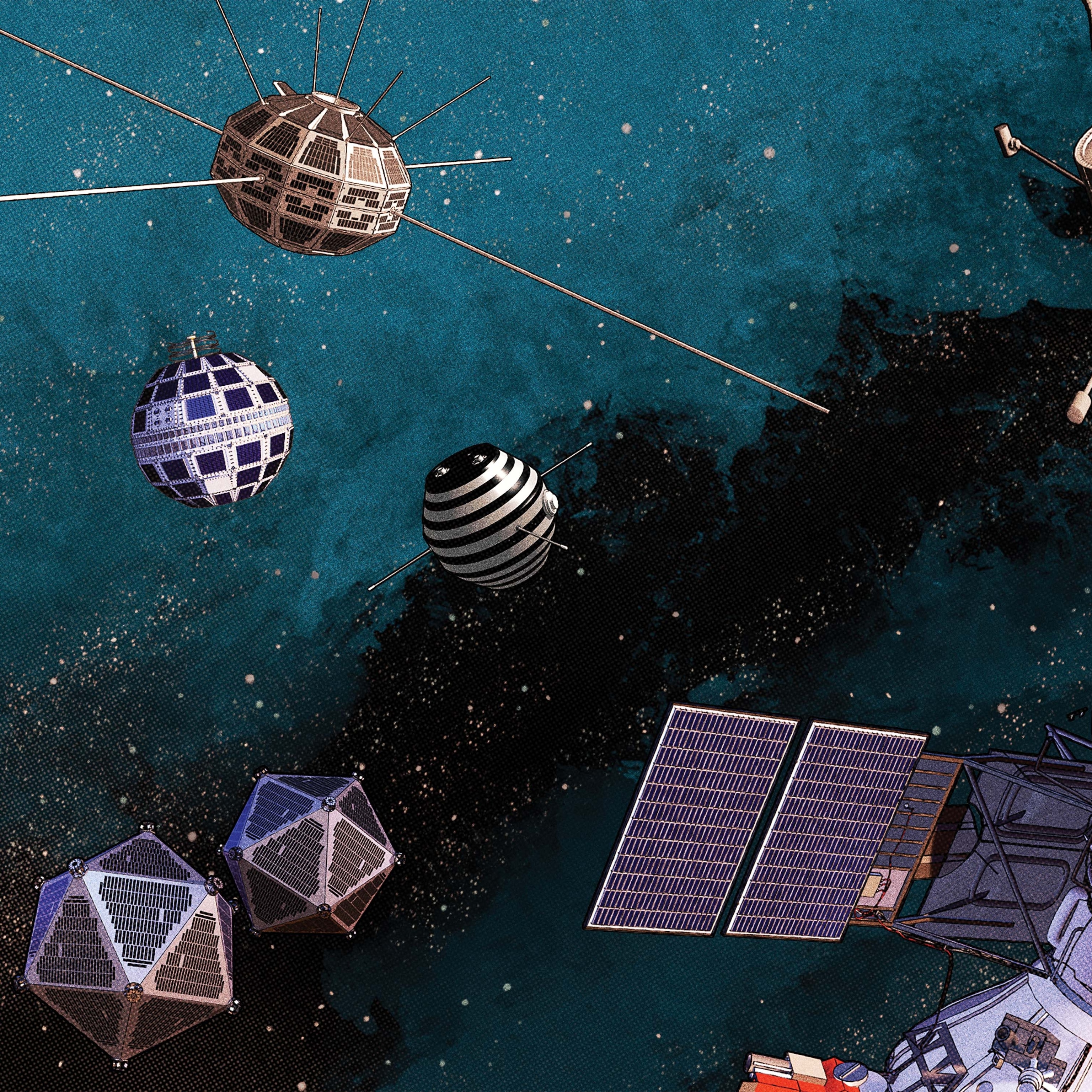
How a Satellite May Help Find Missing Malaysian Plane
Seven pings—an electronic handshake—may help solve the mystery.
Seven faint pings picked up by a British satellite orbiting 22,000 miles above the Earth may ultimately lead to the wreckage of Malaysia Airlines Flight 370. If they do, those elusive, scant clues will represent a first in aviation accident history.
Twenty-six nations have pursued a frustrating search for the Boeing 777, which vanished March 8 without a trace. The best chance of finding the plane rests on using a physics concept developed in the 1840s, known as the Doppler effect, to determine the plane's likely flight path as it moved through the darkness.
That kind of complicated mathematical analysis is commonly used in astronomy but has never before been used in an airline accident investigation.
"This is really unprecedented," says Jonathan McDowell, an astronomer at the Harvard-Smithsonian Center for Astrophysics in Cambridge, Massachusetts. "They are doing analysis that's never been done. This is data hidden in the engineering data about the engineering data, so it's sort of like finding something in the footnotes of internal records. It's not something that this signal from the plane was designed to give you. You've got to get the engineers who built the darn satellite to pull out data as subtle as this. "
The analysis of the satellite data narrowed and reinvigorated the search, which at one point encompassed the entire Eastern Hemisphere, ranging from as far north as Kazakhstan to halfway to Antarctica. Now ships and planes are scouring a search zone in the southern Indian Ocean about 1,500 miles west of Perth in western Australia. Investigators have concluded, based on the new analysis, that Malaysia Airlines Flight 370 flew south until it ran out of fuel and crashed into the ocean, killing all 239 people on board.
Meanwhile, new images taken last Sunday and Monday have raised hopes yet again that debris from the plane has finally been spotted. On Sunday, images taken by French-owned Airbus Defence and Space show 122 objects bobbing in a 155-square-mile section, according to Malaysian Acting Transport Minister Hishammuddin Hussein.

In a news briefing, Hussein described some of the objects as "bright, possibly indicating solid materials." The largest is about 75 feet long. They are floating not far from where Chinese and Australian spotter planes earlier sighted possible debris, Hussein said.
On Monday, images from a Thai satellite detected 300 objects of various sizes about 125 miles from the objects sighted by the French, the Associated Press reported. The new disclosure came as Thursday's air search was suspended at 11:40 a.m. local time for bad weather.
With few clues and no physical evidence, the investigation had become bogged down after nearly three weeks because searchers weren't sure even where to look for the plane.
Enter Inmarsat, a British satellite company. When the Malaysian plane disappeared off radar about 40 minutes into an overnight flight from Kuala Lumpur to Beijing, Inmarsat's engineers went to work.
The plane had been tracked by military ground radar making its now infamous left turn away from its route to Beijing. After heading west back across the Malaysian Peninsula toward the Strait of Malacca, it seemed to disappear.
By then, it had stopped communicating with the ground—except in one regard: The plane sent out an automatic ping once an hour that was picked up by an Inmarsat satellite, which sent it to a ground-based radio antenna. This "log on, log off" message is also described as a handshake between plane and satellite. McDowell says it's comparable to the way a cell phone continues to communicate with different cell towers as it travels between them, even though it's switched off.

Inmarsat engineers studied the pings to determine several possible flight paths, according to an analysis by the British Air Accidents Investigation Branch. By looking for small changes in the frequency of the pings, Inmarsat's engineers could determine if the plane was flying toward or away from the satellite.
The analysis allowed investigators to establish two possible routes the plane may have taken: a northern arc and a southern one.
Inmarsat engineers measured the accuracy of their models for Flight 370's predicted route by using information from six other Boeing 777s flown in various directions on the same day as the Malaysian plane. That helped them eliminate the northern arc.
Meanwhile, British accident investigators drew a graph mapping out two potential flight paths west of Australia: one showing the route if the plane had flown 450 nautical miles per hour, and another if it had flown slower, at 400 nautical mph. The two routes are about 620 miles apart at 8:11 a.m., when the plane sent its last ping to the satellite.
By measuring the change over several pings, Inmarsat's engineers were able to determine how the speed of the plane relative to the satellite changed during the flight.
"But there's the catch. You don't actually get the real speed of the plane," McDowell says. "What you get is part of the speed. If the satellite is west of the plane, you wouldn't be able to determine anything about the north-south speed. So you end up with precise but limited information. You don't have enough to say where the plane is."
Inmarsat is continuing to refine the data, in an effort to determine the final position of the plane, British investigators say.
"It's a very big ocean, and it's not standing still," says Jeffrey Richelson, a fellow at the National Security Archive and author of several books on spy satellites. "You have debris that can sink, that can move; and you have all sorts of weather conditions. Even with significant satellite capability, it's not as easy as people might think."








